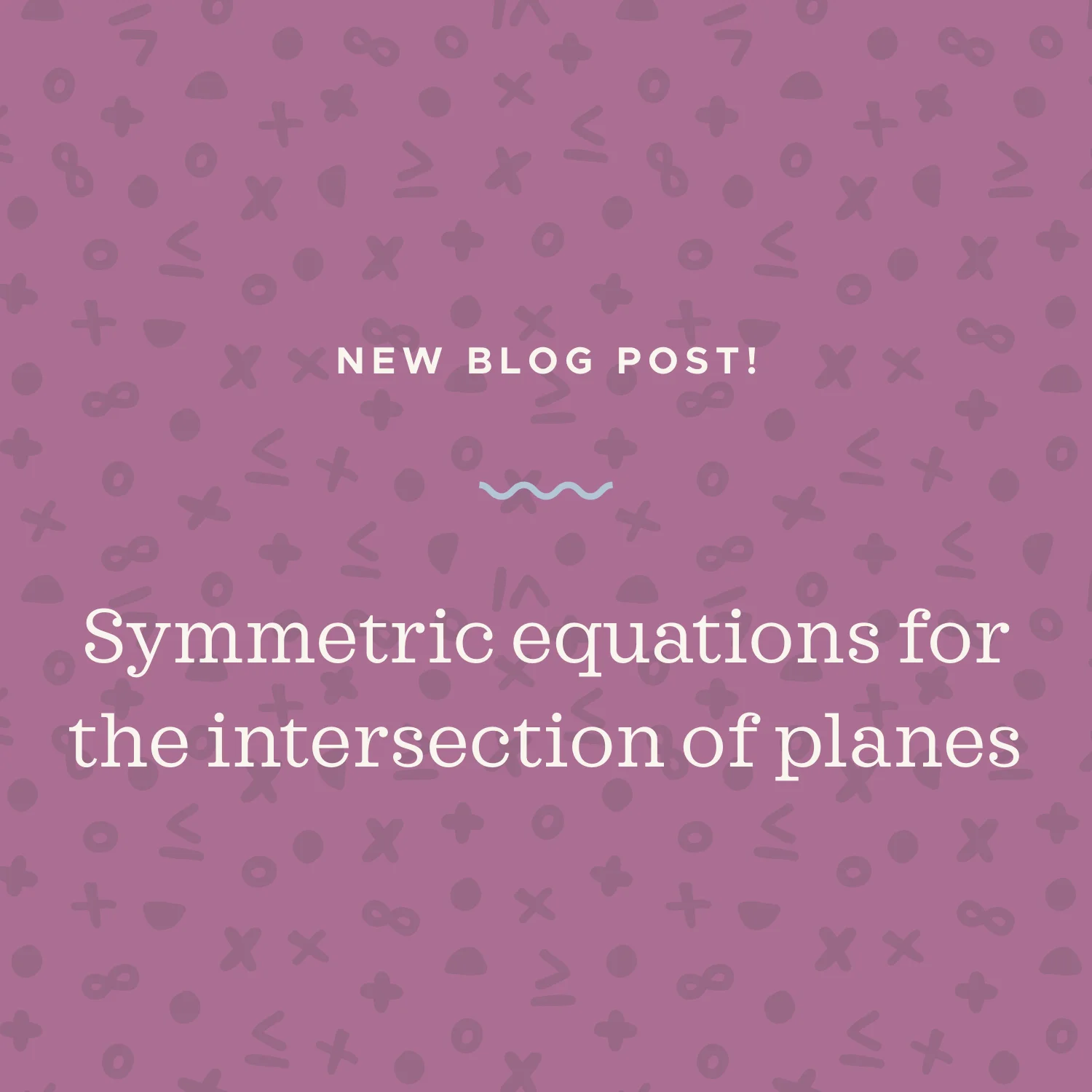Just as we did with single variable functions, we can use the second derivative test with multivariable functions to classify any critical points that the function might have. To use the second derivative test, we’ll need to take partial derivatives of the function with respect to each variable. Once we have the partial derivatives, we’ll set them equal to 0 and use these as a system of simultaneous equations to solve for the coordinates of all possible critical points.
Read MoreWe already know how to find critical points of a multivariable function and use the second derivative test to classify those critical points. But sometimes we’re asked to find and classify the critical points of a multivariable function that’s subject to a secondary constraint equation.
Read MoreIf a line and a plane intersect one another, the intersection will either be a single point, or a line (if the line lies in the plane). To find the intersection of the line and the plane, we usually start by expressing the line as a set of parametric equations, and the plane in the standard form for the equation of a plane.
Read MoreSometimes we need to find partial derivatives for functions with three or more variables, and we’ll do it the same way we found partial derivatives for functions in two variables. We’ll take the derivative of the function with respect to each variable separately, which means we’ll end up with one partial derivative for each of our variables. When we take the derivative with respect to one variable, we’ll treat all the other variables as constants.
Read MoreThe directional derivative of a multivariable function takes into account the direction (given by the unit vector u) as well as the partial derivatives of the function with respect to each of the variables.
Read MoreWe already learned in single-variable calculus how to find second derivatives; we just took the derivative of the derivative. Remember how we even used the second derivative to help us with inflection points and concavity when we were learning optimization and sketching graphs?
Read MoreTo find the linear approximation equation, find the slope of the function in each direction (using partial derivatives), find (a,b) and f(a,b). Then plug all these pieces into the linear approximation formula to get the linear approximation equation.
Read MoreGiven a normal vector to the plane and a point on the plane, we can use that information to find the scalar equation of the plane.
Read MoreThe gradient vector formula gives a vector-valued function that describes the function’s gradient everywhere. If we want to find the gradient at a particular point, we just evaluate the gradient function at that point.
Read MoreBefore we can use the formula for the differential, we need to find the partial derivatives of the function with respect to each variable. Then the differential for a multivariable function is given by three separate formulas.
Read MoreFinding derivatives of a multivariable function means we’re going to take the derivative with respect to one variable at a time. For example, we’ll take the derivative with respect to x while we treat y as a constant, then we’ll take another derivative of the original function, this one with respect to y while we treat x as a constant.
Read MoreIf two planes intersect each other, the curve of intersection will always be a line. To find the symmetric equations that represent that intersection line, you’ll need the cross product of the normal vectors of the two planes, as well as a point on the line of intersection.
Read MorePartial derivatives are just like regular derivatives, but for multivariable functions.
Read More













